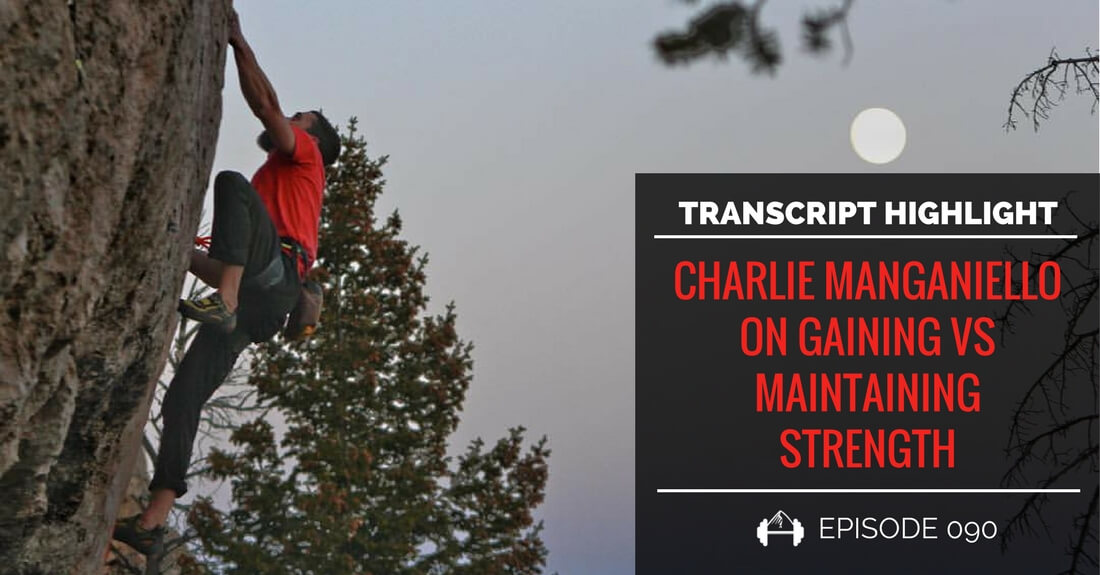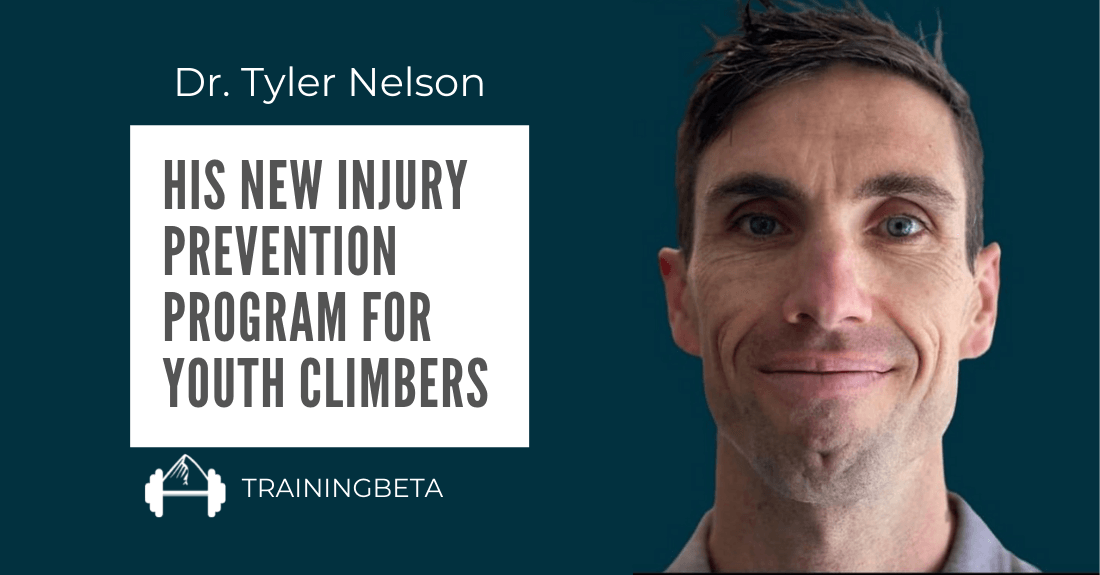A common trap climbers fall into is thinking that the training you are doing today is going to help you send your project tomorrow. The unfortunate reality is that it takes time for us to really make gains through training. A really hard session days before trying your project isn’t going to do anything but make you feel run down and tired during your redpoint attempts.
The flip side of this, however, is that if you spend too much time focusing just on performance and not keeping up with your training you will lose ground and can emerge from a period of projecting weaker than when you started.
Charlie Manganiello, in his recent TrainingBeta Podcast episode, talks about how it’s important to differentiate between gaining and maintaining strength. Here’s an excerpt from Charlie’s episode in which he talks about the differences between these two types of strength training and what changes we can make to our strength sessions depending on which is currently the priority.
Give it a read and if you like what you see be sure to check out the full episode and transcript by clicking through below!
Charlie Manganiello on Gaining vs. Maintaining Strength:
Neely Quinn: Okay, I’m wondering about the strength training. So you described your year, and you were basically saying that no matter which sport you were doing, you were strength training to either maintain or gain strength. I have a couple of questions. One is when you are running or skiing, are you mostly focusing on strength training on the lower half of your body, and vice versa with climbing? How do you piece that out?
Charlie Manganiello: Yeah, and this philosophy rings true though the ClimbStrong literature we have, and what Steve has also said on the podcast. I might focus a little bit on maybe some quad dominant stuff. I mean, that’s a lot of what skiing is. Or unilateral strength, meaning using one leg at a time, like step ups or pistol squats, which is a one legged squat. But most of my strength training, whether I’m skiing or climbing- and they’re pretty contrasting sports as far as upper body and lower body. It’s all the hip hinges, the pushes, the pulls, the squats, some sort of core exercise, and a loaded carry. They don’t really look that different throughout the year. The only thing that changes is the frequency and the load. In season stuff is maybe one max, two times a week. Still high intensity, but lower volume, where maybe I”m doing two sets of five, or even three sets of two, where I’m not doing as much.
Then when we kind of get into the off season, say November-December for my specific example, it’s three times a week, and maybe I’m doing 3×3’s. Maybe I’m doing ladders where it’s 4-6, 4-6, 4-6 for three or four rounds. The workouts, as far as what I’m actually doing… I may have a focus. Say I’m focusing on deadlifts, but all the other patterns are still being done in a strength workout.
Neely Quinn: So I don’t know about you, but sometimes when I strength train, I’m tired [laughs] the next day. I’m wondering if in redpoint season, when you have a project, do you think that strength training on the side could be detrimental to that?
Charlie Manganiello: It is if you don’t put it in the right part of your week. So what I do, and what I have athletes do is- best case scenario would be a redpoint day, and then rallying and trying to get your strength training done after that day of climbing. Then you have the most amount of time to recover for your next redpoint day. You’re not going to try to redpoint the next day anyways, it’s probably going to be a rest day. If you’ve been strength training a lot, and your body is used to it, there shouldn’t be any reason why it’s going to hurt your redpointing climbing. Say it was a redpoint climbing day Sunday, you strength train that night, rest Monday, maybe you have a redpoint day Tuesday or Wednesday you should be good to go. Yeah, absolutely. If you are doing a big strength training day the day before a redpoint, or the morning of, absolutely that will take away from your redpointing day.
Neely Quinn: So, what would be a bad schedule, besides doing it the morning of going out and trying to send? What are other bad decisions to make there?
Charlie Manganiello: Just doing it too much. It doesn’t take much to maintain the strength that you have. We’ve even seen maintenance of strength where you just lift, work out once every ten days. Maybe it would be once every seven days. That’s like, nothing compared to most strength routines where we are seen three times a week. All we are doing is just taxing the central nervous system with some heavy loads, and then you’re getting out of the gym in fifty minutes. It’s not trying to- you’re not going to get any stronger during that season, you’re just trying to maintain your strength. I think people fall in the trap- if you want an example of bad planning- if people have that same redpoint mindset with the numbers they’re using on their deadlifts, or they’re like “Oh I don’t feel tired, I need to feel tired so I get stronger”. People end up doing too much in a season, in a redpoint season.
Full Transcript/Episode: TBP 090 :: Charlie Manganiello on Training for Multiple Sports
(photo courtesy of Charlie Manganiello)
Other Articles You Might Like:
- Strength Training Guide: Why Train Strength?
- 8 Functional Strength Training Exercises for Climbing
- Strength Training: The 4 Basic Movements You Should Be Doing
- Steve Bechtel: Power vs Strength





Leave A Comment